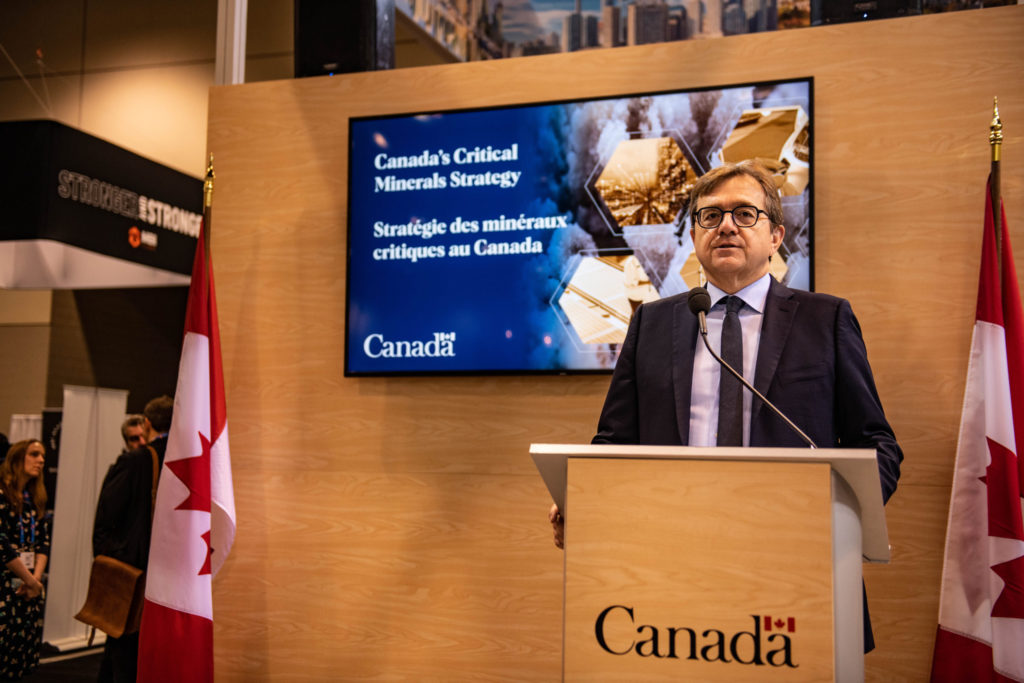Reuters | February 13, 2024 |

Canada’s Natural Resources and Energy Minister Jonathan Wilkinson says more funding for critical minerals projects is on its way. Credit: Government of Canada
Canada plans to boost its energy security by slashing the time it takes to develop new critical mineral mines by nearly a decade with improved permitting processes, energy minister Jonathan Wilkinson told Reuters on Tuesday.

Ottawa is focused on six critical minerals key to making electric vehicles and wind turbines: lithium, graphite, nickel, cobalt, copper, and so-called rare earth elements.
Wilkinson said the mining and processing of critical minerals was currently too dominated by China.
“(We’re) looking at how do we optimize the regulatory and permanent processes so you can take what is a 12 to 15-year process and bring it down to maybe five,” he said.
“There are ways you can just do things smarter … There’s no reason that you can’t do permitting of different things between federal and provincial governments at the same time, instead of doing them sequentially.”
Canada plans to reduce the time to approve mining permits by better funding the regulatory agency to get rid of paperwork backlogs and running permitting and environmental assessment processes at the same time.
The country will have to continue importing cobalt, Wilkinson said, due to its limited resources of the metal. China controls most of the world’s refined cobalt and rare earths supplies.
To cover costs, Canada is putting in place investment tax credits to pay for a “significant chunk” of the capital associated with new mining and mineral processing projects, Wilkinson said.
Funds are also ready to be made available for infrastructure like transmission lines and roads that will help accelerate the development of new minerals, he added.
The government is also investing billions of dollars in several companies’ battery factory projects in Canada, including Swedish battery producer Northvolt and German car manufacturer Volkswagen.
A loan guarantee programme is being put in place as well to provide access for indigenous communities to low-cost debt for investing as equity participants in existing and future projects, Wilkinson said.
In July, a group of five First Nation communities protested against mining plans in the so-called “Ring of Fire”, a region in the remote James Bay Lowlands of northern Ontario that is seen as the next frontier for mining metals such as copper, cobalt and nickel.
Wilkinson said streamlining permitting and environmental assessments would not lead to corner-cutting.
“I think the environmental community also recognizes that there is no energy transition without significantly enhanced volumes of critical minerals,” he said.
(By Forrest Crellin and Julia Payne; Editing by Mark Potter)

No comments:
Post a Comment